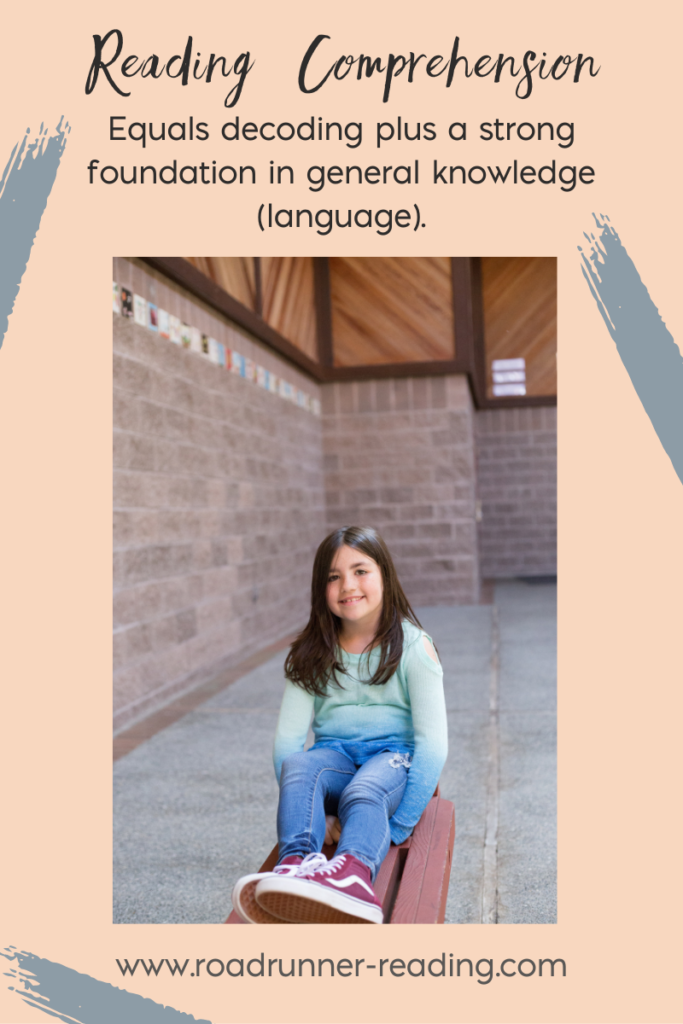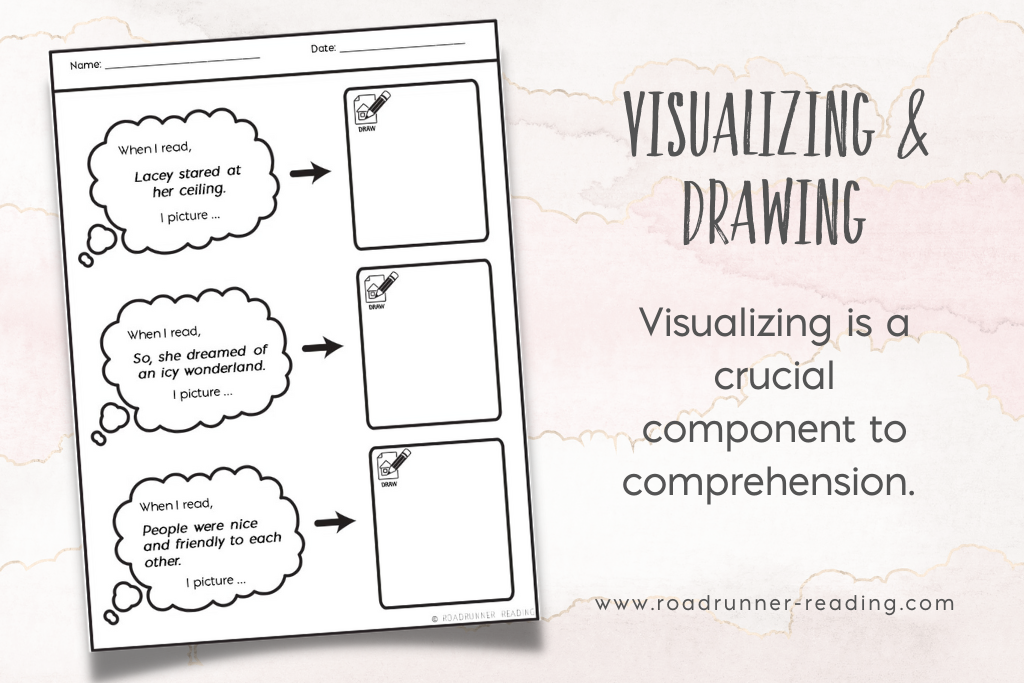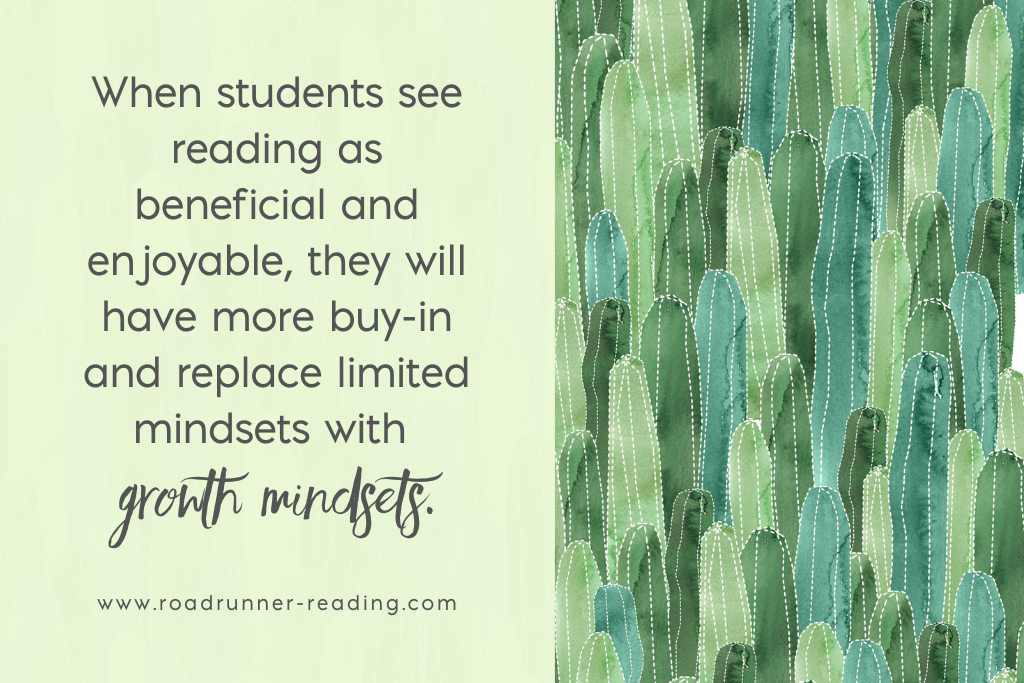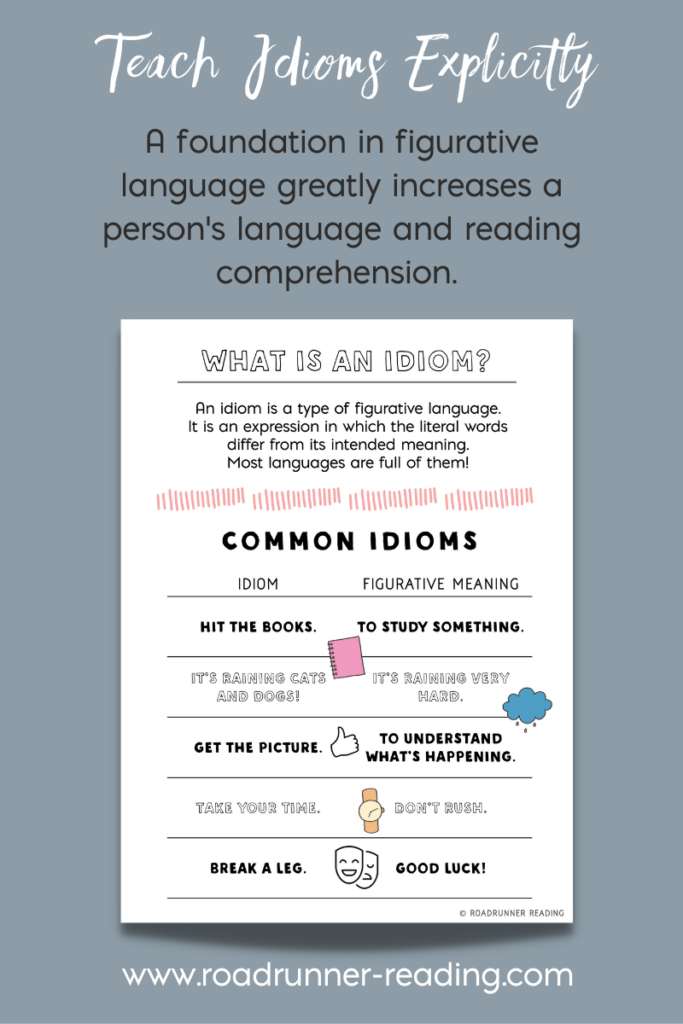Do your students struggle to show comprehension of what they read? Do your students lack a good deal of background knowledge to have them make inferences? As teachers, we likely have all been taught to use reading comprehension strategies like predicting, completing cause and effect activities, and activating prior knowledge to help our students improve their comprehension, but research shows, getting our students to engage in reading comprehension strategies doesn’t improve reading comprehension that much. Instead, we should strive to build up their background knowledge, create an environment that shows reading as a positive part of their lives, and ensure that they are using the new information in their own way.
Before I dive into specifics, I’d like to point out that for true reading comprehension to take place, students must be also working on mastering the alphabetic principle — understanding the sound / letter correspondences within our language. Sign up to receive a free list of the 44 English phonemes (sounds) and their corresponding graphemes (letter combinations) to ensure your students are on the right track to becoming excellent readers!
Strategy 1: Read aloud to your students
When a teacher reads a passage aloud to their students, they are offering numerous benefits. For students who are poor decoders, having text read removes the decoding pressure, allowing them to still get the content through listening. When poor decoders attempt to read on their own, they can access very little meaning as their brains are having to focus primarily on “breaking the code.” Therefore they aren’t building up an arsenal of language skills which further hurts them academically. Remember that reading comprehension equals decoding plus a strong foundation in general knowledge (language). A strong foundation in language includes having a wide array of background knowledge and vocabulary, understanding syntax, and getting the gist of what a story or conversation conveys.
While reading aloud, a teacher can also show excitement about engaging in the information or showing interest in the story. Furthermore, the teacher models correct reading prosody, or the expressiveness to our voices while we read. All good things!

Strategy 2: Explicitly teach idioms
There are upwards of 25,000 idioms used in English. From “it’s raining cats and dogs,” to it was “a piece of cake,” figurative language, like idioms, abound in most languages. The challenge with idioms is that their literal meanings often have little to do with their figurative meanings. Imagine hearing that Robert is the apple of his grandpa’s eye for the first time. The figurative meaning of someone being precious to another has nothing to do with apples or eyes!
Another benefit of teaching idioms is learning the history behind them, again adding to their arsenal of language acquisition. For example, take the idiom — bury the hatchet. The figurative meaning is putting the past behind and moving forward, which originates in 18th century America. Some Native American tribes would bury a hatchet in the ground to symbolize that fighting had now ended. Check out my Idioms Reading Passage and Comprehension Activities resource for a no-prep, easy-to-use resource to get your students on their way of understanding commonly found idioms!
Strategy 3: Teach and emphasize visualizing while reading
For our minds to grasp new concepts, we must form a gestalt of the overall picture. This means we create a whole from individual parts. In the case of reading — we go from a word-level of understanding to an entire paragraph to then a complete passage. How do we help our students achieve this? Through the process of visualizing what one takes in either through reading or through listening.
Teachers can start students at a word level. They can then model for them describing in great detail what they picture for given nouns — a car, a cat, or a house. Teachers can then prompt them with lots of questions to picture in their minds what colors, movement, location, and sizes they picture for given words themselves. We then stretch this out to the sentence level before working on entire paragraphs.
When grade-level decoders show poor understanding, there is a likely chance they are poor visualizers. Visualizing in this way aids in better comprehension and better memory of what one reads or hears.

Strategy 4: Replace limited mindsets with growth mindsets around reading
It’s no surprise that many students hate to read. The reality is, many students are significantly below grade level. Students that are poor readers often develop emotional problems due to feeling inadequate. This epidemic directly affects all of us. Poor readers are more likely to drop out of high school, become involved in the criminal justice system, and have limited work opportunities. Sadly, our communities abound with people downtrodden in life who may directly link their poverty to their lack of reading abilities.
An important piece on the road to helping our students become proficient readers is encouraging them to shift limited mindsets that they likely have developed around reading. I have a third-grade student in mind. She has strengthened her decoding skills significantly over the past year, and her listening comprehension is spot on! But several times a week, I hear the following words come out of her mouth, “I can’t read.”
It’s so discouraging for me, as her teacher, because I know how harmful that belief is. Our students need to know that they can learn to read, that they are on their way to becoming excellent readers, and know that reading is a gateway to living a fuller, more meaningful life.
As teachers, we can incorporate these positive messages around our classroom via cheerful posters. We can start every reading lesson by connecting to real-life situations that will require reading. We can also show enthusiasm ourselves while reading! When students see reading as beneficial and enjoyable, they will have more buy-in and replace limited mindsets with growth mindsets.

Strategy 5: Have Students Teach What you Want Them to Learn
Think back to your school days when you had to create a poster, produce a diorama, or tutor a classmate on a particular topic. You may, to this day, remember some of the details! Why? Teaching others is one of the most effective methods to learn and remember something. If you note on Bloom’s Taxonomy, a hierarchy of activities to encourage learning and cognition — “Create” is at the very top.
Consumption of information is not comprehending the material.
We must grapple with it in some way; we must make it our own! Here are a few suggestions on getting your students to “teach” the material to others.
- Create a comic of a story’s science or plot
- Write a children’s book
- Give three different sections of text to three different groups; have each group teach the material in that section to the other two groups
- Direct students to come up with a “Two Truths and a Lie” about a section of content; let the other students guess the lie
- Assign students to create a role-play of a key scene in a fictional passage


